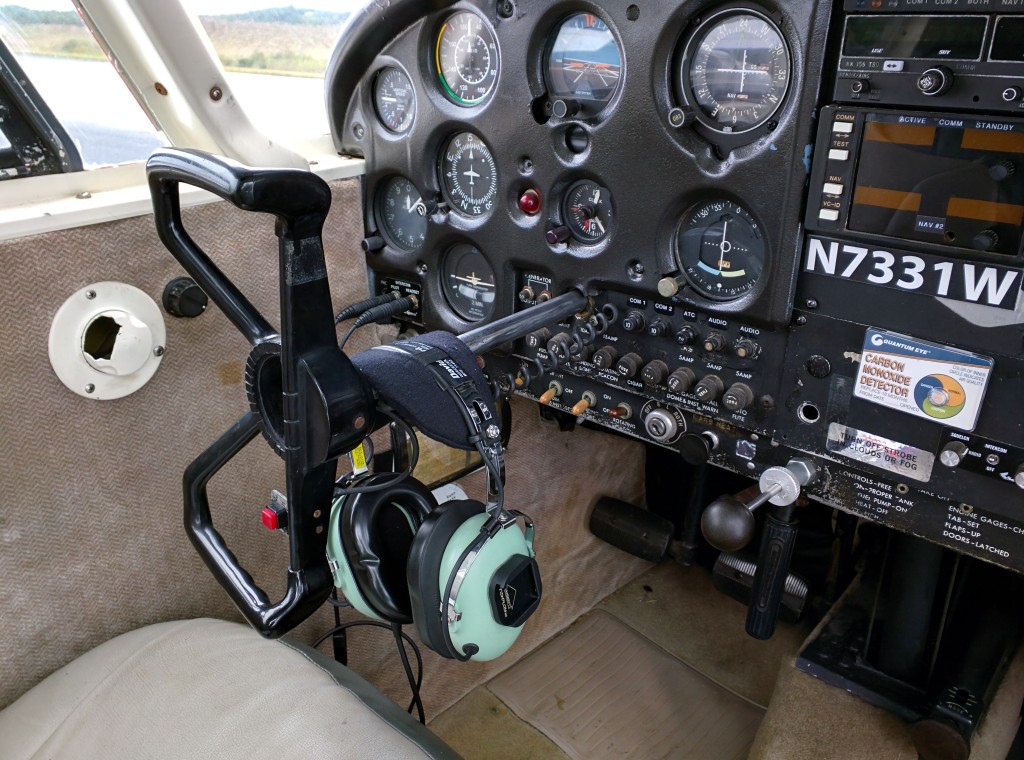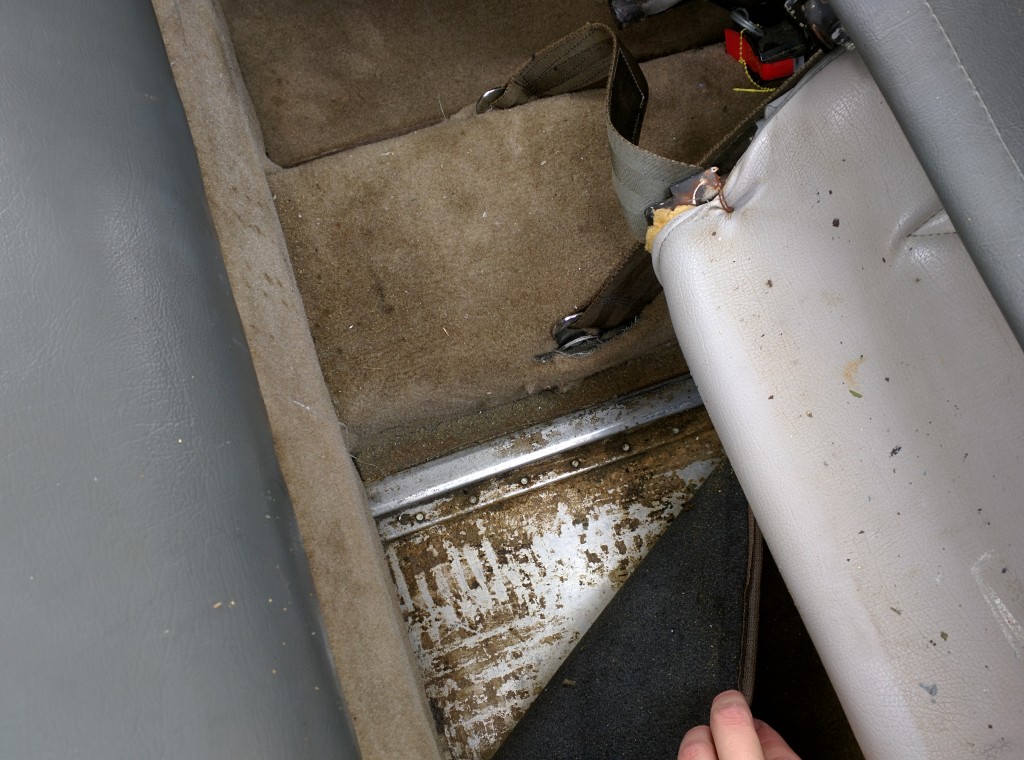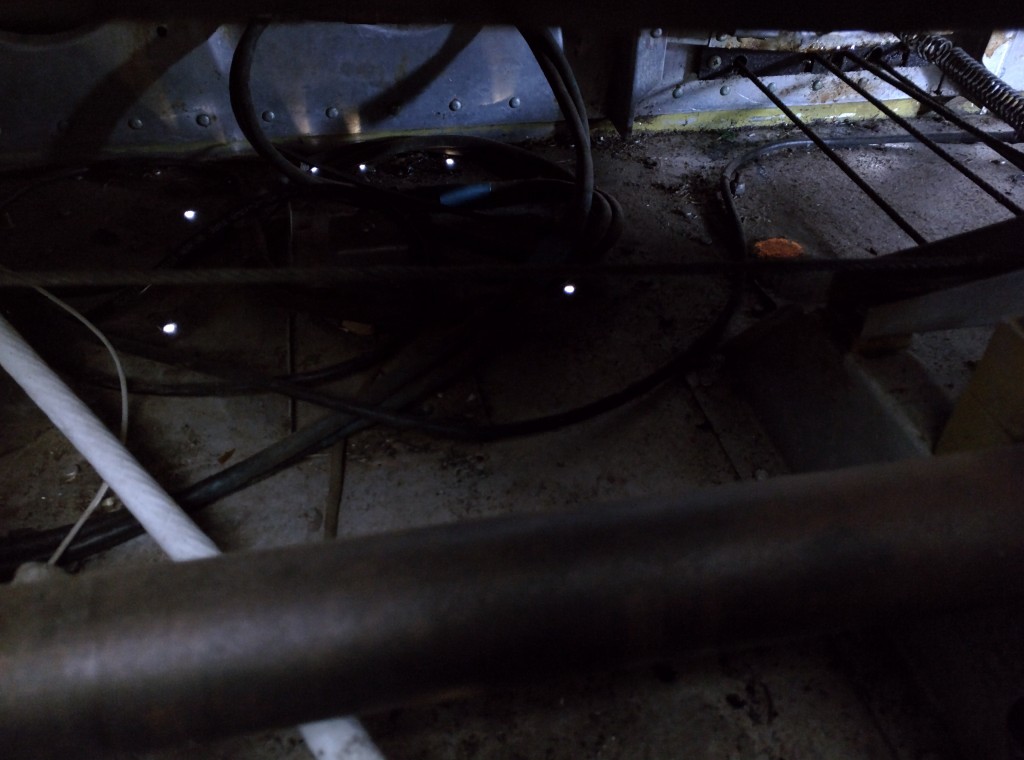Yesterday I posted an article about losing my radios shortly after takeoff from Provincetown airport. The little bit of troubleshooting I did in the air led me to think that I might be dealing with a moisture problem, which would be consistent with some of the other problems I had found on the plane. I had been having some issues with the intercom picking up noise from the rotating beacon and the mechanic back in San Antonio believed this might be due to a grounding issue with the electrics. I thought the radio issue might be related. Now that the rain has stopped I went back to have a peek and pretty much confirmed my suspicions.
When I arrived back at my airplane the field was still wet from the previous day’s rain. On first glance everything appeared to be cozy and dry inside the aircraft, but a small dribble of water on the back seat made me do some additional digging.
The interior of the Cherokee is lined with carpet, but they easily come out for servicing and maintenance. I noticed that the carpet was wet, and when I pulled it off the floor there was a noticeable puddle of water collected in the bottom of the plane. There’s a vent on the roof of the aircraft that provides an escape path for the air coming in through the front vents and it looks like some water may have come in through that vent overnight. I was able to pull the carpet out, squeeze the water from the rugs, and mop up the rest with a rag.
So much for the passenger compartment. Underneath things were a little less cheery.
My Cherokee has two antennas for the radios, one on the top and one on the bottom. The radio on the bottom is hooked to COM1, and the radio on top feeds COM2. The bottom radio looks to still be a bit waterlogged despite the drain holes in the bottom of the fuselage, and I believe that this water is what shorted out the radios after takeoff. It doesn’t look too terrible, and a day or so drying out in the sand dunes should get everything sorted.
I tested the radios using a handheld transceiver (on the 123.45 “flight test” frequency) and noted that COM1 was still pretty much dead. There’s an occasional carrier tone when transmitting, but the radio head shows a solid “T” indicating that the antenna is getting power. I’m planning on using that radio only for receiving transmissions until I get back to San Antonio to get the system checked out, just to be safe. I might even INOP it and turn the whole system off if I don’t need it.
The only reason I might not INOP the radio is the glideslope receiver. NAV1 is the only radio hooked up the the CDI that has a glideslope indicator as well as the VOR indicator, and the NAV antenna on the tail is still working just fine.
COM2, which is hooked up to the radio on the roof, is now completely dried out and fully functional once more. Testing with my handheld radio I was able to hear myself perfectly fine and I don’t anticipate any issues. I believe I can get the rest of my flying done relying on COM2 and using my handheld as a backup.
In short, water is my enemy. But I think I have the situation well in hand.


